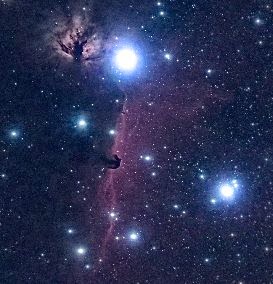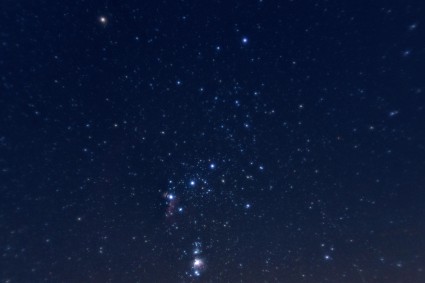 Tom pointed me at this awesome article about an experiment run as part of the BBC programming Stargazing Live. Basically, they asked their viewers to go outside with their cell phones and take a picture of the night sky with their cell phones and upload the (almost entirely black) images to a website. They then used a process called “stacking” that basically aligned all the pixels and added them together. The net result was perhaps better than anyone has anyone had any expectation of getting. Very, very cool.
Tom pointed me at this awesome article about an experiment run as part of the BBC programming Stargazing Live. Basically, they asked their viewers to go outside with their cell phones and take a picture of the night sky with their cell phones and upload the (almost entirely black) images to a website. They then used a process called “stacking” that basically aligned all the pixels and added them together. The net result was perhaps better than anyone has anyone had any expectation of getting. Very, very cool.
If you want to see the full image they constructed, click on the version below and you’ll get the resolution they achieved, including some views of the Great Nebula in Orion:

And, as it happens, the kind of thing that I could easily do with the hardware and software that I have lying around. I’m putting this onn my list of experiments to run, maybe with my iPhone, but more likely with the Pi Camera (easier to automate).
Addendum: Glancing at my copy of the Uranometria 2000, my “goto” star atlas, it’s clear that the picture I linked above has all the stars in the Uranometria, which is supposed to go down to about magnitude 9.75. Under dark skies, you’d only see down to magnitude 6 or so. Stars which are magnitude 9.75 are about 32 times dimmer, ordinarily you’d need to use a telescope with a 50mm aperature (a large-ish finder scope) to see these stars.
Wow, amazing. Watch out LSST!
It’s very impressive.
The stars are noticeably sharper around the horsehead region, and to a lesser extent around the great nebula. There’s a lot of other nebulosity in that whole region that might have come out if they had spent more time processing other areas.
Yeah, I suspect that the calibration has less error near the center of the frame than toward the periphery. I judge the limiting magnitude near the center to be around 10.5 or so, maybe 11 but it’s definitely lower, perhaps only 8 at the edge.
I wonder if we can aggregate all of our Rx antennas on a particular group of frequencies, and make a similar map? The WSPR infrastructure has some of the concepts in operation.